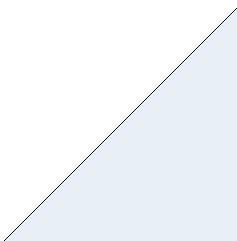



The size of individual
abrasive grits influences the stock removal rate, chip clearance in the wheel,
and corner holding ability. Abrasive grain size is determined by the size
of the screen through which it passes. The number of the nominal size indicates
the size of the opening in the screen.
A lower number of grain size indicates a large grain, and a higher number
denotes a fine grain.
As though the problem of screening grain size is complicated because of the
unsymmetrical shapes of the grits, some idea of the grain sizes in inches
can be gained by knowing the size of the square opening between the wires
through which the grain will not pass:
30 grit | .0232" square holes
60 grit | .0098" square holes
120 grit ..0035" square holes
The grit size number may also indicate a combination of two or more adjacent
sizes. Combinations are often found to provide a more efficient grinding action
than single sizes. Grain size varies from removal rate, surface finish desired
and workpiece material.
The coarsest grit sizes (8 through 20) are used for billet conditioning and
snagging, where the purpose is to rapidly remove large amounts of excess or
impure material with little concern about surface roughness or geometry of
the part.
Sizes 24 through 46 are also normally used in high stock removal operations
where geometry is important and some control of surface finish is required
on soft materials.
Finish depends upon several wheel characteristics. Fine surface finishes may
often be attained with the use of fine grain wheel. Other variables in producing
fine surface finishes are bond type, wheel hardness and stock removal rate.
Finer grit sizes do help significantly in grinding hardened work. Here there
is less tendency for the wheel to load (metal in the wheel face) and grain
has better penetrating ability on the hard workpiece. On stock removal operations
fine grain generates mere heat, so steps should be taken to quench the additional
heat.
On softer materials, where the tendency to load is greater (larger ductile
chips), the coarser grain size are more efficient ( more pieces per dress
or higher metal removal rate) because of the greater chip clearance between
the grains.